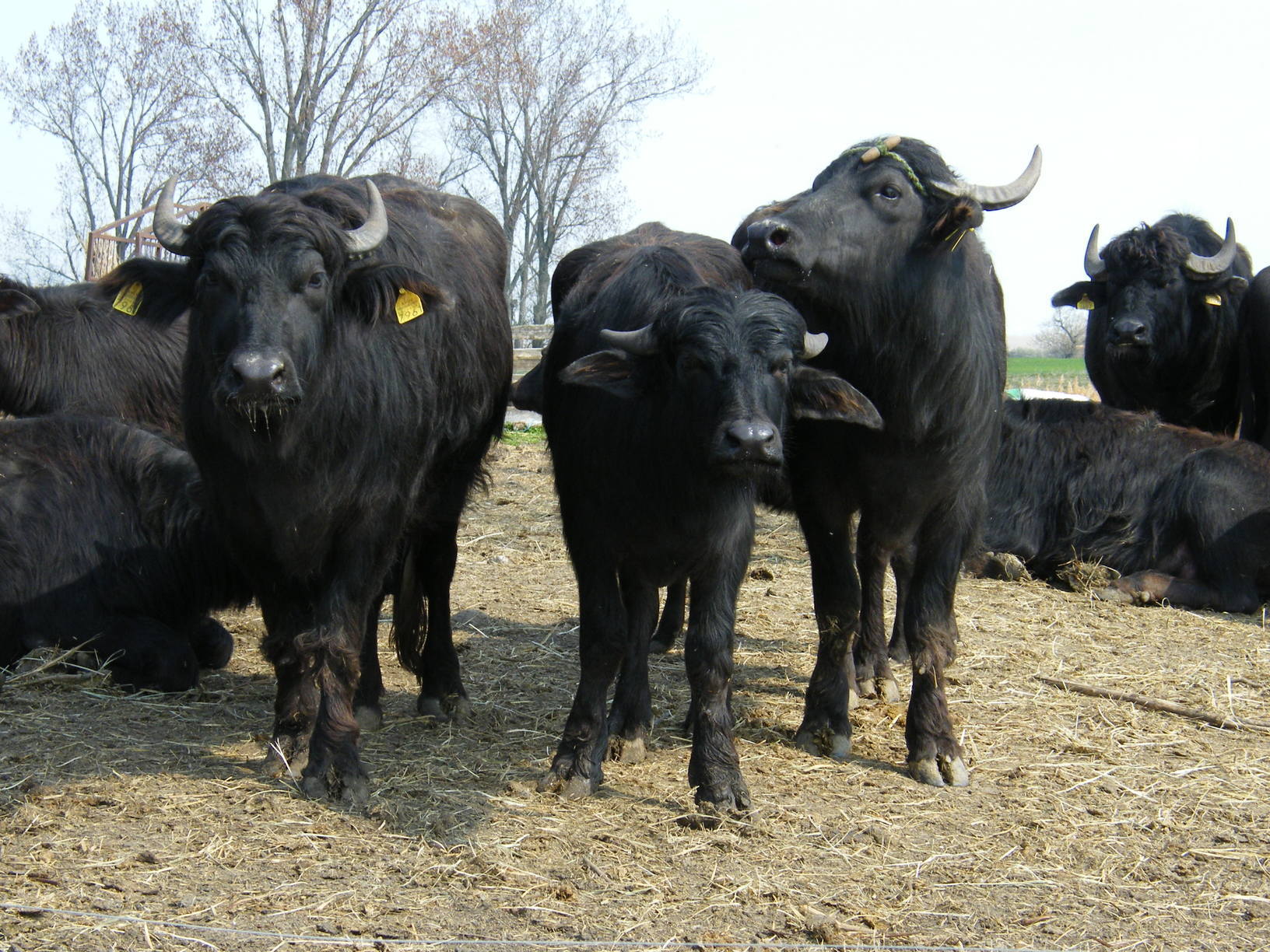The origins of animal domestication in the Carpathian Basin

The buffalo can be considered to be one of the ‘most’ indigenous livestock in the Carpathian Basin – says József Marticsek, breeding director of the Hungarian Buffalo Breeders Association. He adds that buffalos that had lived near Lake Fertő 6000 years ago had already been subject to the deformation of their skulls caused by yokes. This means that they were among the first to be kept as farm animals in the Carpathian Basin, reports Magyarmezőgazdaság.
The buffalo was the most widespread in our country during the Turkish occupation. In the late 19th and early 20th century, 150,000 buffaloes lived in Hungary. Back in those days, they were mostly used to move heavy machinery, carry large loads or to plough. Besides their draft purposes, their meat and milk were also significantly utilised.
Later, the industrial revolution and the spreading of motorised tractors pushed the buffalo to the background to such a degree, that stocks of any significance could only be found in Transylvania around Méra and Kalotaszeg, where buffalos were still kept for their milk and draft purposes.
In 1989, in order to save Hungary’s buffalo population, Hungarian national parks had joined together. The animals came from three sources. One of these was a sizeable Transdanubian estate herd, which was transferred to the Nagyberek State Farm and then to the Balaton-felvidéki National Park. The Hortobágy National Park Directorate collected the buffalo population of small farmers in Hortobágy, and the third source was a herd from Transylvania. Today, there are about six thousand buffalos in Hungary.
The Carpathian Basin is a fascinating area and hides many exciting secrets. If you would like to know more about a possible volcano hidden under our feet or would like to hear more about the research behind the wildlife’s collapse, just read those two articles.
The buffalo’s nature-conservation role is unsurpassed. They not only trample down the reed but also eat it and they graze on an area where other species like cows would not survive.
Besides, the utilisation of buffalo meat is significant in Hungary, but only a few people utilise their milk. However, there are places, like Italy, where they breed it mainly for their milk, and their population can reach over half a million animals. There, the tradition of making and selling mozzarella cheese is the key to the success of the buffalo. Buffalo milk is exceptional. One cow only gives about 5-7 litres of milk a day, but its fat content is between 6-16%.
József Marticsek, breeding director of the Buffalo Breeders Association, said their association has 120 members. Their most important task is to keep the animals registered and to raise breeding bulls. An EU-funded program is under way to ensure that bulls are distributed to the association’s members free of charge. Thus, every opportunity is given to keep the number of buffalos and the tradition of keeping them as livestock ever growing.
Source: magyarmezőgazdaság.hu

